We offer in-person 11+ tuition for children in Year 4 and Year 5. Our classes are taught by highly qualified secondary school teachers, using specialised 11+ papers and resources.
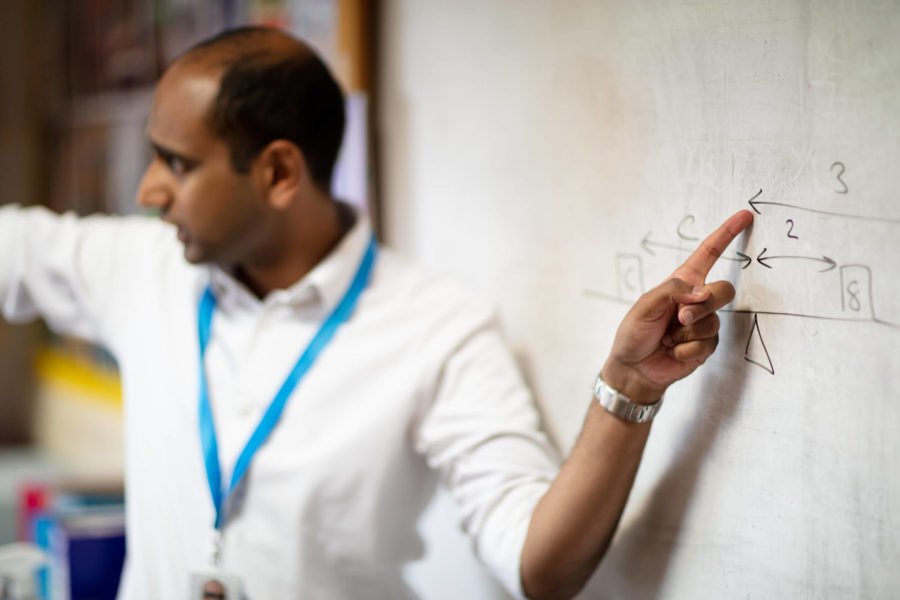
We offer a free trial lesson to all of our students.
2 hours of in-person tuition every Saturday. Mock test and detailed report every month. Full access to our online video tutorials.
All of our teachers are qualified secondary school teachers.
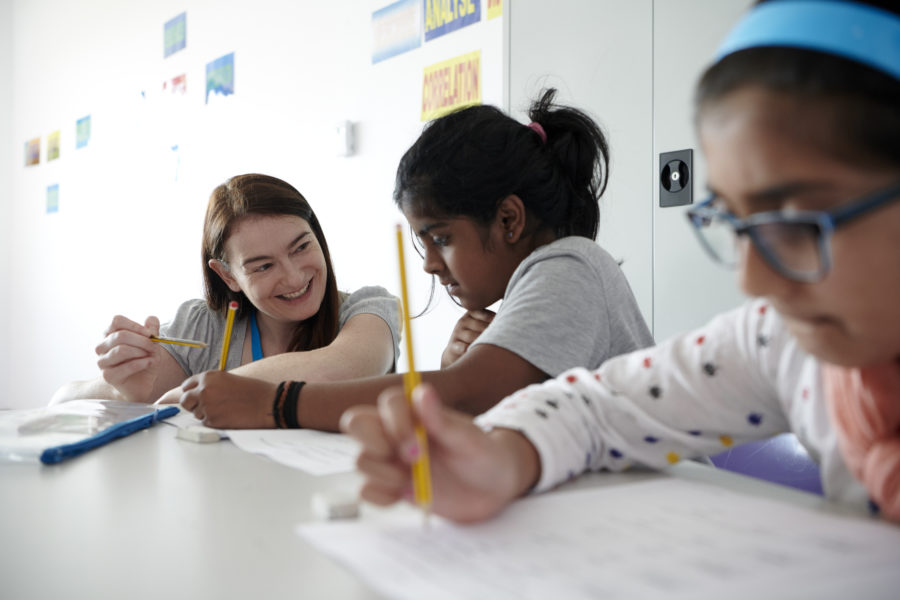
We aim to hire the best teachers. But we know that a stellar CV doesn’t always mean a great teacher. That’s why our teachers are vetted, interviewed and undertake a supervised demonstration lesson as part of our recruitment process. This means we have personal, first-hand experience of every applicant, before we commit to taking them on.
All of our teachers have a background in secondary school teaching, and we have separate teachers for Maths and English. Most primary school teachers have to juggle multiple subjects, but our teachers are specialists in their field.
We are committed to only hiring well-trained and specialised teachers. This makes our hiring process difficult! But it is also what distinguishes us from other companies, which often rely on untrained assistants or primary school level teachers.
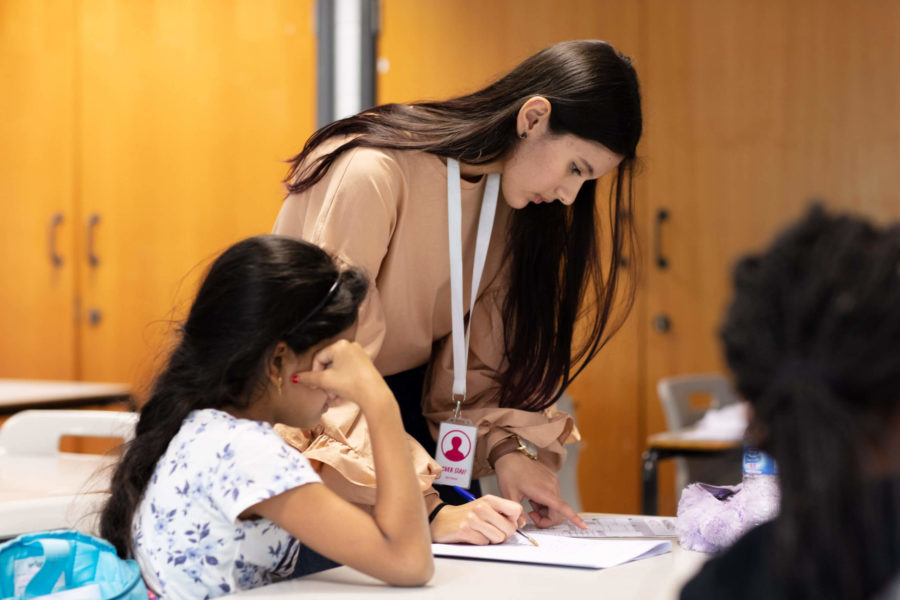
In addition to our teachers we have a team of supporting teaching assistants. Every class is assigned a teaching assistant and a team leader who help out in lessons and provide extra support and encouragement to children who need it. If your child is struggling with something in particular, you can ask them to go over it with your child. They’re your main point of contact for the course, and will always be available to talk to you before and after lessons.
Good role models. They’re the people who you look up to and emulate. They inspire you and show you what you can achieve. If you’re in an environment where excellence is expected, your own aspirations and goals become aligned with those around you.
All of our teaching assistants are high achieving students from the surrounding selective schools and universities. Great grades alone aren’t enough though. Our teaching assistants need to inspire. They have to be authentic. They have to be fun, and interesting! An applicant’s academic background is crucial – but it won’t get them hired on its own. We value their social skills, the ability to inspire, and the clarity of their explanations just as much as their grades.
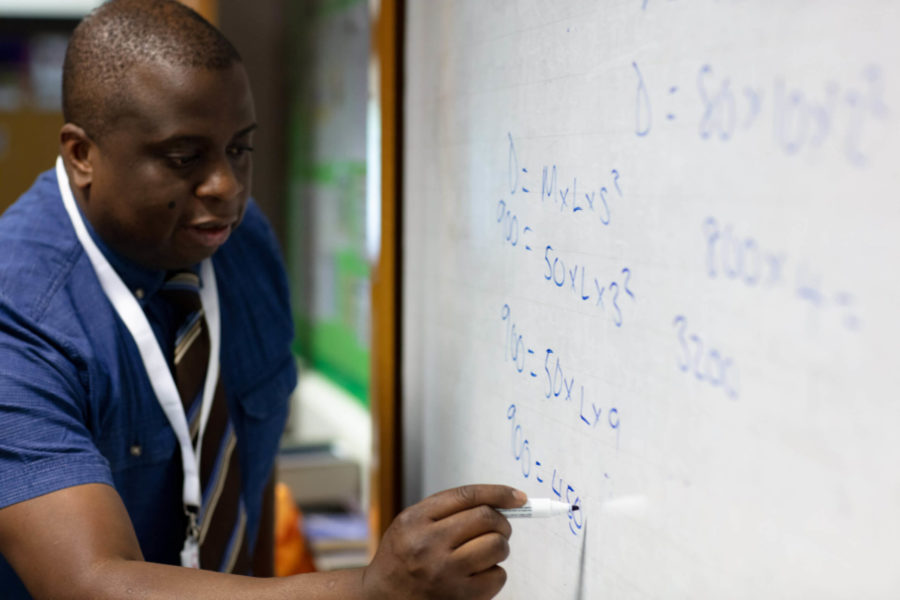
We tailor our 11+ course to be in line with the exams set by schools in the local area; please get in touch for location-specific advice.
Currently the entrance exams we focus on only require English and maths, however, if you require extra work for verbal and non-verbal reasoning exams, this can be provided to you free of charge.
Most primary schools do not teach maths to the level required by the 11+ exam. Children are often required to use mathematical techniques in the exam that they simply have not been exposed to in the classroom. To ensure our students aren’t surprised by unfamiliar topics on the day of the exam, we dedicate the first half of our 11+ course to topic-based lessons that focus on particular skills and subjects such as probability or fractions. These lessons provide your child with an understanding of areas that may not be properly taught in primary school.
The second half of our 11+ course focuses on understanding worded questions. While mathematics in primary school is often taught using simple numerical equations, most questions on the 11+ exam are typically worded problems using real-life examples, which usually require multiple steps to solve. It can be difficult for children unfamiliar with the format to understand the questions, so we teach children to break down worded problems into simple arithmetic, revealing the basic equations that underlie seemingly-complicated questions.
Our English course is designed to familiarise children with the three most common test formats found in the 11+ exam: multiple choice, written comprehension, and essay writing.
Our weekly lessons test children’s reading and comprehension skills with a variety of short and long-form questions modelled on those found in the 11+ exam, as well as helping them familiarise themselves with exam techniques. These lessons are organised as part of a larger syllabus which covers topics such as grammar, literary techniques, and logical analysis.

Children at this age have generally had little opportunity to practise the sort of long, structured essays and stories that are called for in the 11+ exam. That’s why we set regular writing assignments for homework and in mock exams. This written work is marked and annotated using our specially designed assessment system. This allows us to identify the specific areas where children can improve their writing.

Throughout your time on the course we encourage you to stay in close contact with us and our teaching staff. We are always available to talk you through how your child is performing, and how to help them improve.
Our monthly mock test is key to this process, as it allows you and our teaching staff to see where your child is doing well and where they can improve. Children take two tests each month: one for Maths and one for English. These tests are taken under strict exam conditions and the results are recorded on a table, allowing you to compare your child against the rest of the cohort.
Depending on whether a test is written or multiple-choice, we may either mark it by hand or mark it using a scanner and marking software similar to that used in real 11+ exams. All of our tests are handed back to you after marking along with the relevant answer sheets, so you can better understand the marker’s decision making process and see how your child might have improved their answers.
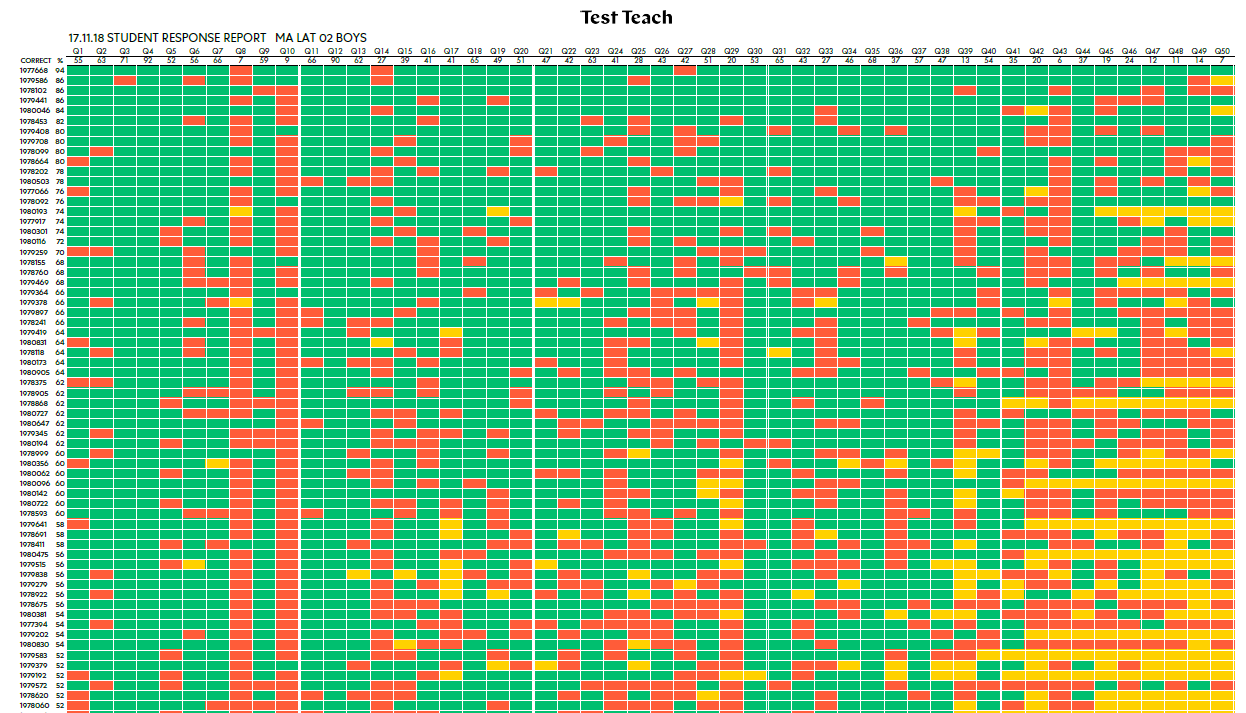
Once the tests have been marked, we compile the data for analysis. Each month we give you two printed A3 charts like the one shown above, one for Maths and one for English. We keep the data separate for boys and girls, as most of the grammar schools we target only take either girls or boys in Year 7, not both.
This is important as it allows you to assess the relative strengths of your child in each subject, by only comparing their performance against those they will compete against in the real exam. For example, historical data suggests boys score higher than girls in Maths at this age, whilst girls score higher in English. Therefore, it may be misleading to compare a boy’s English score to the cohort of girls. His score may seem weaker than it actually is, because he is being compared with students he will not be competing against in the real exam.
In our reports, each child is identified with an ID number which is shown in the first column. The higher your child has scored, the higher their name is in the column.
Your child’s percentage score is shown next to their ID number, as well as their response for each question. Correct answers are shown in green, incorrect answers in red, and blank responses are marked yellow.
The row at the top of the chart shows what percentage of children got each question correct; the easier the question, the higher this number will be.
Children can use this to identify the easiest questions that they got wrong. This is the best starting point for children looking to improve, as they can tackle questions at their level first. Using our online learning platform, we ask students to make sure they watch the videos for the ten easiest questions they got wrong each month.
Questions left unanswered are shown in yellow. If your child’s row ends abruptly with yellow, your child ran out of time and failed to answer the questions at the end of the test.
By doing monthly tests, children acclimatise to the difficult work and exam conditions, and learn the pace at which they should be working. By the end of the year, we aim to eliminate all yellow from the chart.